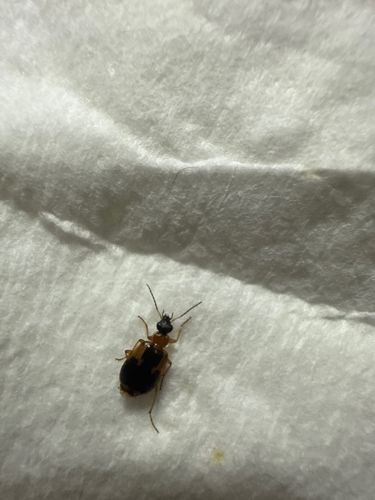Rove Beetle
Scientific Name: Staphylinidae (family)
Order & Family: Order: Coleoptera, Family: Staphylinidae
Size: Typically small to medium-sized, ranging from 1 mm to 35 mm in length, but most commonly 2-10 mm. The specimen in the image appears to be on the smaller side, likely a few millimeters.

Natural Habitat
Highly diverse habitat range; found in almost all terrestrial environments. Common in leaf litter, under bark, in decaying wood, fungi, carrion, manure, and also around human dwellings, especially in damp areas.
Diet & Feeding
Primarily predatory, feeding on other small insects, mites, and their larvae. Some species feed on decaying organic matter, fungi, or carrion.
Behavior Patterns
Many species of rove beetles are active predators, often found scurrying quickly across surfaces or flying. They are known for their ability to quickly move through tight spaces. Larvae are also typically predatory. Some species play a role in decomposition.
Risks & Benefits
Generally beneficial as natural predators of many agricultural pests and other nuisance insects. They are important in decomposition and nutrient cycling. Some species can be a nuisance if they enter homes in large numbers. A few species are known to produce defensive chemicals that can cause skin irritation in humans if handled (e.g., Paederus species, though this beetle does not appear to be one of those).
Identified on: 8/13/2025